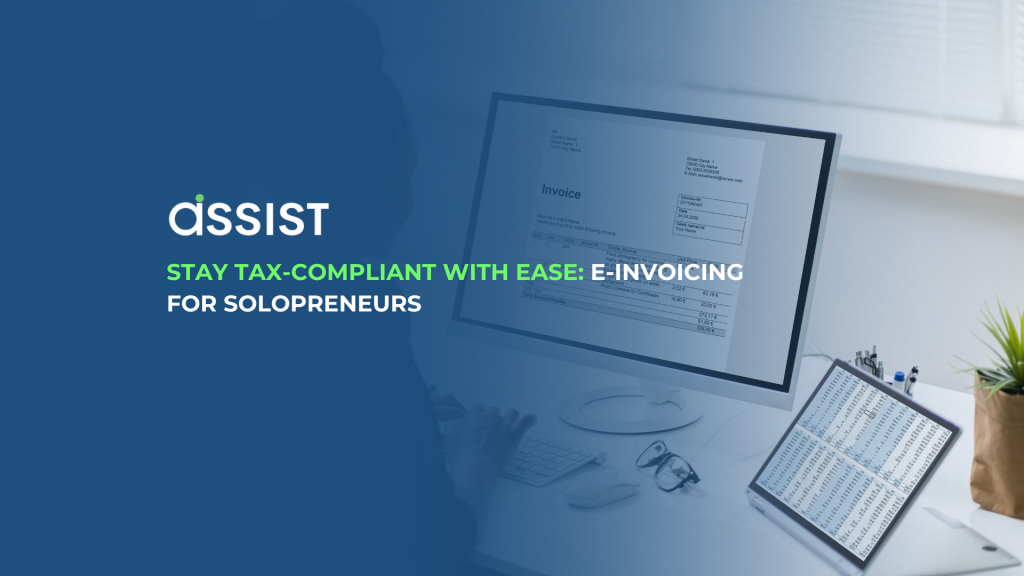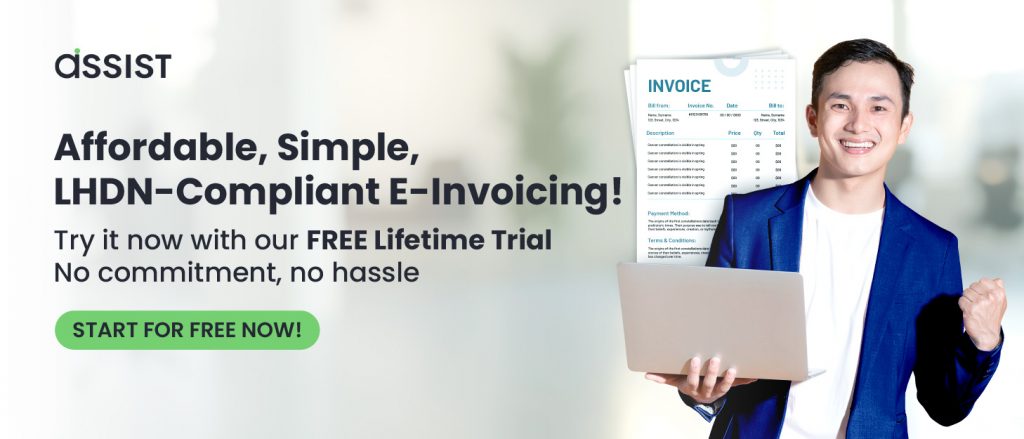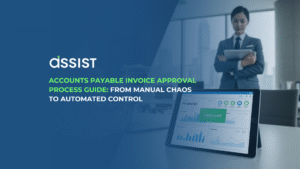There’s something uniquely stressful about being your own boss—especially come tax season. Unlike salaried employees who get a neat EA form, solopreneurs have to juggle multiple income streams, track every sen, and somehow make sense of receipts stuffed in glove compartments or random shoeboxes.
One solopreneur, Aisyah, a freelance graphic designer, shared that before switching to a digital system, she dreaded April. “I’d spend hours scanning old receipts and trying to remember which clients had paid. It was chaos,” she said.
Why does this happen? Traditional invoicing—be it Excel sheets or handwritten bills—relies heavily on memory and manual entry. That opens the floodgates to errors, missed claims, and tax penalties.
Table of Contents
ToggleWhat Exactly is E-Invoicing (And Why Should You Care?)
Imagine an invoice that practically does your taxes for you. That’s e-invoicing in a nutshell. An electronic invoice is more than just a PDF—it’s a structured digital document that complies with national tax standards and can be transmitted directly to the tax authority.
In Malaysia, the MyInvois system, powered by PEPPOL, is being rolled out by LHDN to standardize tax reporting. E-invoicing ensures that every invoice sent or received is traceable, verifiable, and fully tax-compliant.
Key Differences – Traditional Invoice vs. E-Invoice
Feature | Traditional Invoice | E-Invoice (MyInvois-ready) |
Format | PDF, paper, Excel | Standardized digital format |
Validation | Manual | Auto-validation |
Tax Authority Integration | None | Direct LHDN submission |
Risk of Error | High | Low |
Audit Readiness | Limited | Fully compliant |
No More Piles of Receipts: Real-Time Tracking Made Easy
With e-invoicing, every sale, every expense, and every payment is instantly recorded. That means no more backtracking or guessing if Client A paid in March or May. Most e-invoice platforms—even ones like Assist.biz—integrate with simple accounting dashboards so solopreneurs can see their cash flow in real-time.
Example: You sell an RM800 custom logo. You create an e-invoice via Assist.biz, it logs the payment, syncs it to your bookkeeping, and reflects it as income for April. Done. No duplication. No fuss.
Bonus Perk: You also get to auto-track expenses when suppliers issue their e-invoices to you. It’s two-way magic.
Never Miss a Deadline Again: Automating Tax-Ready Reports
If you’ve ever panicked before submitting your CP500 or annual tax return, you’re not alone. Tax deadlines sneak up fast—and if you’re not prepared, it could mean late penalties or worse, audits.
E-invoicing platforms offer pre-built reports that are LHDN-friendly. These include:
- Monthly sales summaries
- Tax-deductible expenses breakdown
- Client payment histories
- Digital audit trails
With these reports, your accountant—or you—can file taxes with confidence.
Avoiding Costly Mistakes: Reduce Human Error with Smart Validation
Ever sent an invoice and forgot to add your SST number? Or listed the wrong invoice date? These small slip-ups can become expensive mistakes, especially if they catch LHDN’s attention.
E-invoicing platforms use real-time validation. That means:
- Required fields are checked automatically
- Tax calculations are error-proof
- Duplicate invoice numbers are flagged
Assist.biz, for instance, ensures that every e-invoice complies with Malaysia’s current tax rules before submission. It’s like having a mini tax advisor in your pocket.
Small Business, Big Protection: Keeping Your Financial Data Safe
Data breaches don’t just happen to big corporations. Solopreneurs are equally vulnerable, especially when storing sensitive financial info on unencrypted devices or unsecured cloud drives.
E-invoicing platforms offer:
- End-to-end encryption
- Automated cloud backups
- Role-based access control (so even if you hire help, your finances stay protected)
List: Why Data Security Matters
- Safeguards client trust
- Ensures financial records aren’t lost in hardware failures
- Keeps you in compliance with data protection laws like PDPA
Start Smart: How Assist.biz Makes E-Invoicing Effortless
Assist.biz is built for Malaysian solopreneurs who want simplicity, speed, and full MyInvois compliance. Whether you’re selling artisanal cakes or managing freelance web projects, it covers your invoicing needs without the steep learning curve.
Key Features:
- MyInvois-ready e-invoicing
- Auto-generated LHDN reports
- Mobile-friendly dashboard
- PEPPOL integration
- Fast setup—no tech skills needed
Take the Headache Out of Taxes—Try Assist.biz Today
Being your own boss doesn’t have to mean being your own tax accountant. Let Assist.biz handle the invoicing, while you focus on what you do best.
👉 Sign up now at Assist.biz and stay compliant without breaking a sweat.
Frequently Asked Questions(FAQs)
What is e-invoicing and how does it work in Malaysia?
E-invoicing is the digital generation, validation, and submission of invoices through a tax-compliant system like LHDN’s MyInvois. It helps businesses streamline tax reporting and reduce manual errors.
Is e-invoicing mandatory for solopreneurs in Malaysia?
Yes, starting in phases from 2024–2025, LHDN requires e-invoicing for businesses—including solopreneurs—based on annual income thresholds.
How does e-invoicing help with tax compliance?
It auto-generates tax-ready reports, ensures every invoice includes mandatory fields, and integrates with LHDN’s system, reducing audit risks.
Can I use e-invoicing if I don’t have accounting knowledge?
Absolutely. Platforms like Assist.biz are designed for non-accountants, offering user-friendly dashboards and automated features.
What are the benefits of using Assist.biz for e-invoicing?
Assist.biz offers MyInvois compliance, PEPPOL integration, auto-validation, real-time tracking, and secure cloud backups tailored for solopreneurs.





